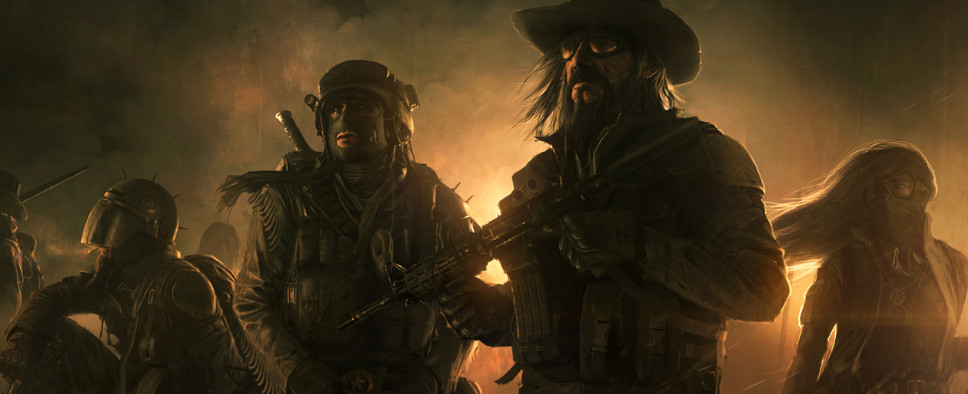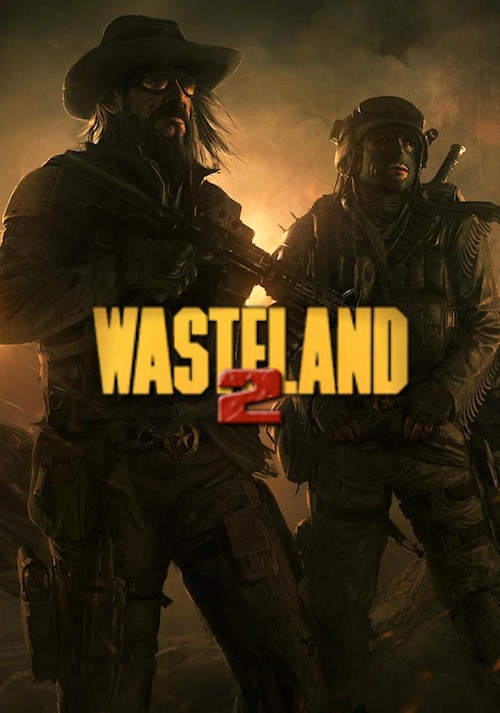Wasteland 2 Preview
-
Category: PreviewsHits: 17780

Article Index
The beta itself contains about five major locations - Ranger Citadel, Radio Tower, Highpool, Ag Center, and Rail Nomads Camp. The first is your home base, though it's not fully available from the start of the game, and the second is the "tutorial area". Things really get going afterwards, with the game marking Rail Nomads Camp, a non-plot-critical town hub area on your map, and crises at both Highpool and Ag Center flaring up at the same time - without going into spoilers, whichever of those two latter locations you choose to visit first will have a significant impact on the game world.
Actually getting from place to place is done on a world map screen that's similar to that of the original Fallout, but also ties in some simple resource management elements similar to Neverwinter Nights 2: Storm of Zehir. The main resource to pay attention to while travelling is water - run out, and your party is pretty much out of luck - which can be filled at hidden oases across the map or at a few set refill stations inside map locations themselves. Random encounters and radiation clouds will also contribute to attrition as you travel, meaning that you probably won't want to dally or waste time. Right now the world map is a bit sparse, with only the major game locations mentioned above available, along with a collection of hidden caches to find, but I have to assume that the map will become more populated by Wasteland 2's release.
Rangers 4 Lyfe
As Wasteland 2 starts up, you're called on to create a full party of up to four characters, or select from pre-generated ones. You'll assign points to a number of attributes - Coordination, Luck, Awareness, Strength, Speed, Intelligence, and Charisma (or the "CLASSIC system" as some have dubbed it) - as well as a number of skills divided up into Combat Skills, Knowledge Skills and General Skills. All of these operate on a 10-point scale; attributes are fixed at character creation, while skills can be advanced on level-up later on.
The character system of Wasteland 2 is a real strength. Not only does it feature substantially more skills than many other RPGs these days, but somehow the game manages to make almost all of them useful. At the same time, it's just stingy enough with the points at character creation and level-up to make you seriously consider how to build your party. In Wasteland 2, building a character that's good at everything is impossible, and even an entire party is bound to have some weaknesses even if you try to maximize the spread of skills. It's reasonably well balanced even at this early stage, and creating characters under this system is great fun.
What makes Wasteland 2 a bit different from other popular CRPGs, especially those in the Infinity Engine vein, is that it tends to be highly focused on skill use and action rather than on dialogue. Though there are plenty of conversations to be had, the game is more concerned with its world interactivity and reactivity than in giving you a hundred different conversation options to steer the story. Creative or logical skill use, or specific order of actions tends to be rewarded by the game and often leads to different results - Wasteland 2 doesn't always telegraph its choices obviously, but you can count on it usually acknowledging your actions one way or another.
When it comes to matters of honor, Wasteland 2 is already capable even in its beta state. The game uses a turn-based combat system with turn order decided by initiative of the combatants, and it plays out on a square grid that is drawn when battle begins. Use of cover plays a fairly large role in combat, s Wasteland 2 actually features a full cover system that could be positively compared to XCOM: Enemy Unknown's, making positioning and tactics such as flanking viable and often very important.
The combat encounter design is also generally strong, but could still use some work. Although enemy variety is good, and enemies have different types of abilities (such as giant toads that will use their tongues to steal weapons right out of combatants' hands), your foes will rarely use team tactics and usually either settle to bum-rush your party, or hide behind some cover and take pot shots. But, when the game combines several enemy types together and provides some interesting terrain, often battles still end up being quite challenging - cover points are not always immediately accessible, and you'll frequently need to use creative positioning to survive - but it never feels unfair and when you do make mistakes, you tend to learn from them quickly.


